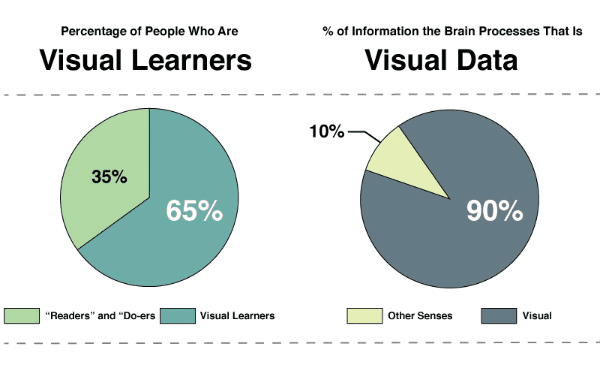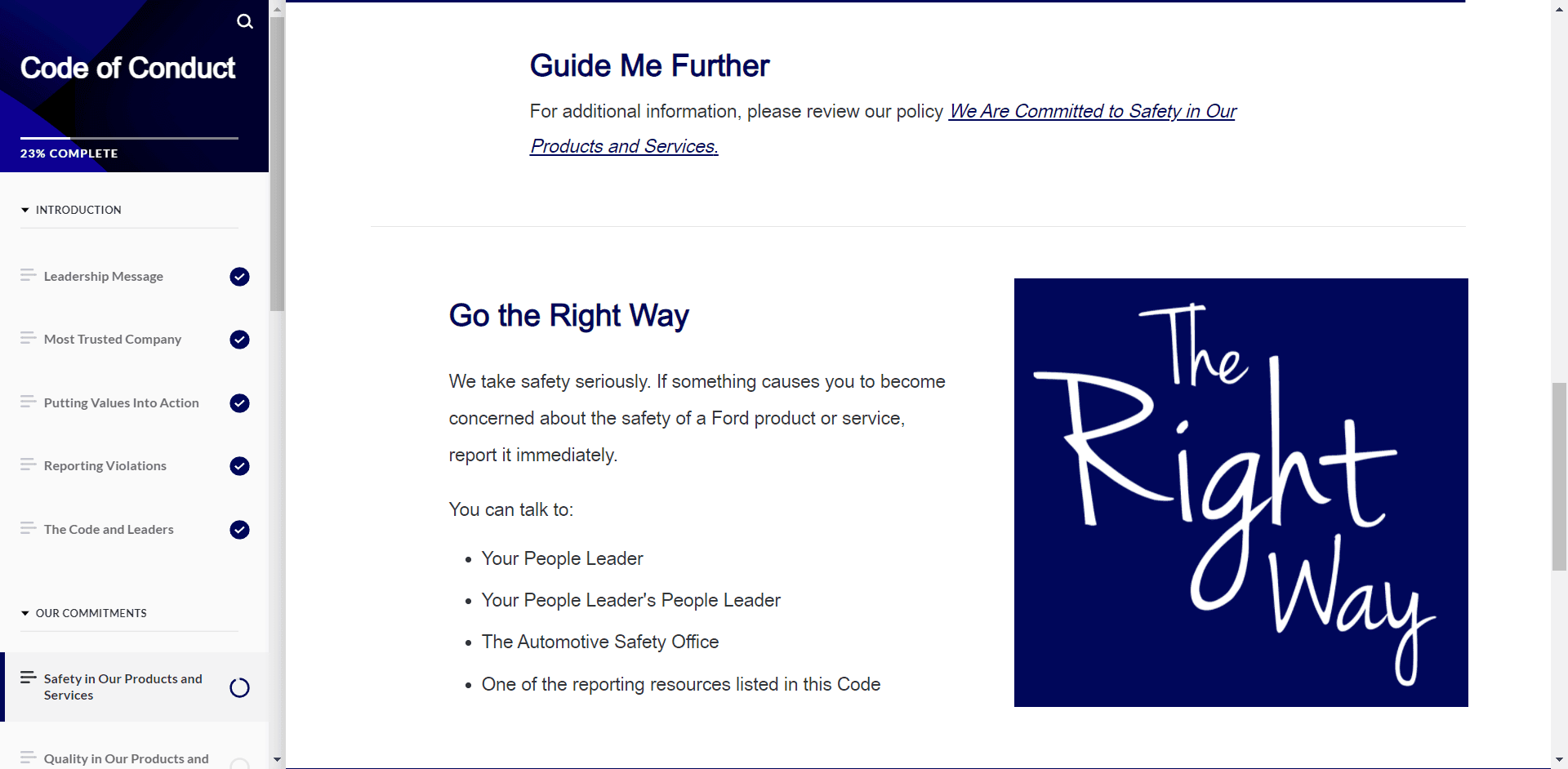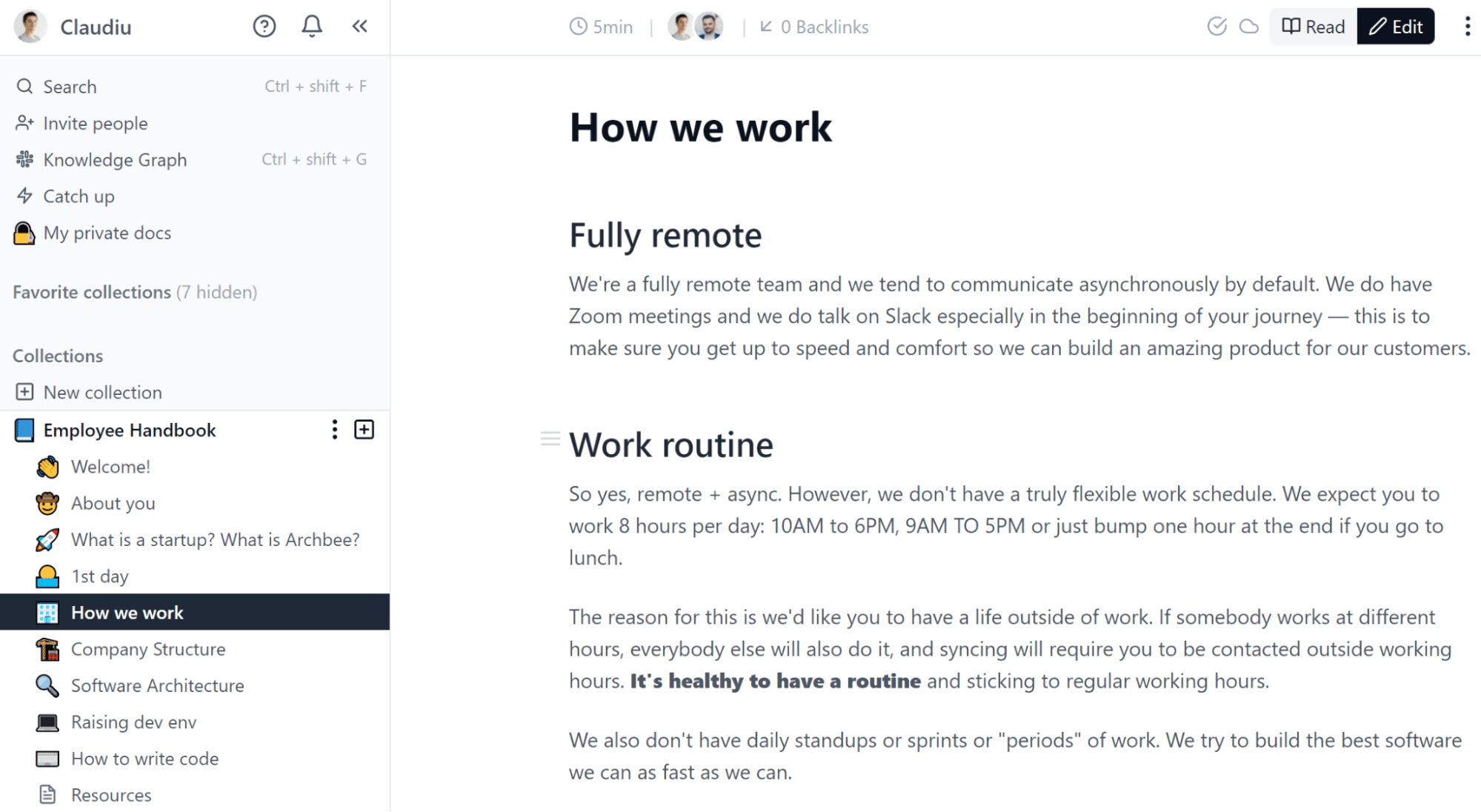At first glance, creating a knowledge base might seem easy. After all, you just need to write down your procedures, product information, and employee guidelines and share this knowledge with your employees.
But you would be surprised how much thought and effort goes into creating a quality knowledge base that will educate your employees, provide them support in their day-to-day work and improve their skills and expertise.
That's why in this article, we’ve covered six best practices that will help you manage your knowledge base in no time. Let’s see what they are.
Create Content With the End-User in Mind
Where any type of knowledge is concerned, the format you present it in is almost as important as the content you’re presenting. Therefore, while you’re creating your knowledge base, don’t forget to make the content you’re filling it with user-friendly and easy to absorb.
So let’s see a few best practices that will allow you to write the best content for your knowledge base and style it so everyone will want to read it.
Employees will prefer the content that will give them information at-a-glance. So make sure that your content is straightforward, on point, and relevant to your team members. This is particularly important because we tend to forget most of the information we read.

Source: Archbee
Taking care to only write down the essentials and sticking to the point ensures your employees will retain more information pertinent to their work and won’t waste time navigating through long articles.
Also, you should pay special attention to how you will structure your content, as employees tend not to read big blocks of text. That means headlines should be noticeable and paragraphs divided into subheadings and bullet lists to improve readability.
You can make it even more accessible by including charts, infographics, images, and other visual elements, as people often look at the pictures before reading the content. An excellent example of all this comes from The Hershey Company.

Source: The Hershey Company
Their Code of Conduct, a key element to any knowledge base, is all about quality content. If you read the text in the picture above, you’ll notice that it outlines the most crucial information about recordkeeping in a way that’s easy to understand.
The other elements we’ve discussed previously are also featured here. The headline is concise, a different green color emphasizes the subheadline, and the text is divided into blocks to enhance readability.
What is great about the Hershey handbook is that it actually becomes something employees will want to read, as the information is written in an easy-to-understand language and presented in a way that is pleasing to the eye.
And if you get inspired by their example, creating content that will attract employees and motivate them to use your knowledge base will be an easy task.
Embed Videos
Many knowledge bases harvest the power of video content to help their employees learn faster and more effectively.
Text and videos each have their advantages, and if you take the best of both worlds, you’ll create a knowledge base that will benefit your employees immensely.
Especially if you bear in mind that 65% of people are visual learners and will be more inclined to go through the knowledge base if you incorporate visual elements into it.

Source: Content Marketing Institute
In comparison with text, the general consensus is that video content is more suitable for tutorials, troubleshooting, walkthroughs, user manuals, procedures, and strategies, as well as content on company vision and mission.
For example, suppose you explain complex ideas or workflows through a video. In that case, you’ll provide your employees with a quicker learning curve and a more interactive experience, ensuring that they comprehend the topic better and remember it in a way that just with text wouldn’t be possible.
People feel more engaged when watching video content. It’s much easier to understand complicated how-to procedures if they can immerse themselves in a video clip that explains the details visually and step-by-step.
Let’s see an example from WD-40 Company, a famous manufacturer of household products. On their website, they outlined the company’s values and incorporated the video that explains the company’s beliefs further.

Source: WD-40 Company
In the video, CEO Garry O. Ridge and the employees from offices worldwide talk about the company's values and what they mean to them in their day-to-day work.
And while the values are emphasized in the text next to the video, it's the video that shows us how real people in real-life situations can use them to improve their work.
Video explains more fluidly and naturally what the company stands for and invites other employees to use them for solving problems and making decisions.
As you can see, including videos can be a great way to enrich your knowledge base further and make the content easier to grasp.
But as videos can be time-consuming and costly to make, try to limit their use to the topics that aren't prone to changes, such as company vision and values, to avoid having to waste resources on remaking them down the line.
Categorize Your Knowledge Base Content
Once you’ve filled your knowledge base with useful content, you can start organizing it to make it easily accessible to your employees.
The single biggest step you can take, organization-wise, is to sort your content into categories according to the topics, departments, or products they pertain to.
Categorizing the entries will enable employees to find the information based on the topic quickly, without the frustration of going through different documents searching for a piece of data.
If you are unsure of how to create a list of topics, a good idea might be to imagine what people would write in the Google search bar. That will enable you to think like the employees, and you will be able to find your perfect categories in no time.
This example from Ford vividly illustrates how you can structure your knowledge base by categories.

Source: Ford
When putting their Code of Conduct handbook on the internet, they didn't place it on one web page, which would make the employees scroll down the entire document to find the information they need.
Instead, they went the extra mile and systematically organized the content by categories, enabling them to jump to the sections they are most interested in.
A good practice to follow is to place the categories on the left-hand side, and include a search option, to make it even easier for employees to find their way around.

Source: Archbee
We all agree that few things are worse than documents and information scattered in drawers, shelves, folders on a computer, ring binders. This kind of chaos can discourage employees from using the content at all.
But if you create a quality knowledge base, systemize it into categories, and enhance it with the search function, as Ford did with its handbook, team members will locate what they need in no time. Also, this will most likely encourage them to use the knowledge base very often.
From everything that's been said, it's clear that categorizing your content can be particularly useful in your knowledge base management. Considering these benefits, we encourage you to incorporate this helpful practice in your internal knowledge library.
Use FAQs as an Opportunity to Capture Knowledge
We often think of the FAQ section as a list of questions and answers that we may or may not read once in our lives.
Often too long, too detailed, and many times outdated, somewhere along the way, we started to think of it as not particularly relevant, as we were able to find answers more quickly elsewhere. But that’s only true for customer-facing resources where a simple Google search often yields faster results.

Source: WhatsApp
That being said, we shouldn’t dismiss FAQs so quickly. As this section addresses the most essential questions an employee might be wondering about, it can be extremely helpful to the employees in their day-to-day work.
That’s why the questions need to be carefully chosen to resonate with your employees, and the answers should offer quality solutions.
On the list, you can include the most common questions that you usually get from your team members, new hires, and even clients.
We often think of the FAQ section as a separate page where we have all the questions in place, and underneath them are the answers.
But this doesn’t necessarily have to be so, as we can see in this example from Pepsico. By dividing it into parts and mixing it with other content, they made their FAQ section more engaging and easy to grasp.

Source: Pepsico
As the picture shows, they dedicated the left part of the page in their Code of Conduct to the confidentiality questions and provided the answer.
Since confidentiality is quite important for all companies, and especially for large companies like Pepsico, they also included a picture of one of their most popular beverages, Mirinda, to draw the employees' attention.
You can find essential questions and answers like that throughout the handbook, thus making it an excellent way to present your FAQ to make sure it will be read.
Another great practice is to add a link to the end of the FAQ section that directs employees to a page where they can find more about the topic.
By linking other articles, tutorials, and other content, you can add extra value to your knowledge base very quickly and with almost no effort.
To conclude, the FAQ section can enrich your knowledge base and be of great help to the employees every time they need more information to finish the task at hand. And it doesn't have to be boring, as Pepsico’s example clearly shows.
Control the Access
Controlling access to the knowledge base is crucial for every company because it ensures that vital information is secured and shared only with the right people.
Therefore, once you've created articles in your knowledge base, your next step should be restricting the access based on the team, role, or management level.
Imagine that you've created an innovative set of solutions intended for your software developers. In that case, you might want to share it with only a select group of experts and restrict others from accessing sensitive data.
Or you may want to assign different employees to create articles in your knowledge base, but you don't want all of them to have the capability to edit the article you just spend hours working on.
The solution to this problem would be to choose a quality knowledge management software that offers you a wide array of possibilities for protecting your information.
For instance, our documentation software, Archbee, offers three access levels and will enable you to assign employees different permissions in no time.

Source: Archbee
By dividing the users into team members, administrators, and superadmin, it has never been so easy to create and share documents among employees. Plus, you can create as many custom groups as you like, which only certain team members will have access to.
For example, let's say you want to share lambda layers with your team of developers, like in the screenshot above. You can create a custom group, add team members, and assign them roles with just a few clicks. Then you can start working on the project with ease, knowing that your workflows and essential data won't be shared with the public.
With that being said, it's clear that limiting access to your knowledge base is highly recommended if you want to keep your documentation safe and protected at all times.
Keep Improving Your Documentation
When creating your knowledge base, keep in mind that your work will probably never be finished. A knowledge base is a work in progress, not a one-time activity.
And if you want it to be valuable and relevant to your employees, it would be advisable to keep improving it by updating and creating new content regularly.
It might be a good idea to put one employee in charge of going through your knowledge base every two or three months and update, change, or even remove the content if necessary.
Also, be prepared to update parts of the knowledge base at any given time when the changes in the policies, rules, and regulations occur.
However, it’s also important to keep track of those changes so you can have a solid understanding of how your knowledge base is evolving. This is another feature quality documentation software, like Archbee, can provide for you.

All in all, it’s not just about keeping your knowledge base alive; you should let it grow and develop to always resonate with your staff and the issues surrounding your work.
For example, a recent global issue that has undoubtedly caused some stir and forced companies to make comprehensive changes to their knowledge bases is the COVID-19 pandemic.
The pandemic has changed how companies work around the world, which has made its way into knowledge bases in the form of adjustments to company policies.
Among other things, workers have had to quickly adapt to working from home, so entire chapters needed to be written to allow for this change.

Source: Archbee
Events like these just go to show how agile and flexible you need to be when working on your company knowledge base.
Work environments, procedures, and even legal regulations are always in flux, so you need to be ready to change with the times.
To conclude, regularly improving your knowledge base is a must if you want to have fresh and relevant content for your employees to use in order to learn and develop their skills.
Conclusion
In this article, we’ve described six practices that will help you create a quality knowledge base for your company.
At the same time, we’ve tried to remind you of the importance of having a knowledge base in place to collect, preserve, and share essential knowledge throughout the organization.
Packed with all these benefits, hopefully, we’ve encouraged you to go on an exciting journey of creating such a knowledge base for your company.
Not only will it benefit your employees beyond measure, but it will also enable you to better understand your company and how it functions.
Frequently Asked Questions
Write for the end user, not the author. Aim for fast answers, plain language, and clear next steps.
- Start with the outcome: Open with a 1–2 sentence TL;DR and who the article is for.
- Keep it scannable: Use descriptive headings, short paragraphs, bullet lists, and callouts so readers can spot the answer quickly.
- Make it actionable: Provide step-by-step instructions, examples, and expected results (including how to verify success or roll back).
- Teach with visuals: Add screenshots, short GIFs, or diagrams with concise captions and alt text.
- Use plain language: Avoid jargon, define acronyms, and prefer consistent terminology across articles.
- Be consistent: Apply a standard template, tone, and formatting so every article feels familiar.
- Improve findability: Write descriptive titles, add keywords and search synonyms, and cross-link related topics.
- Consider accessibility: Ensure color contrast, keyboard-friendly steps, and captions for media.
- Plan maintenance: Show the owner, last reviewed date, and version. Retire or merge outdated content.
Tip: Keep each article focused on a single task. Link out for deeper context instead of cramming everything into one page.
